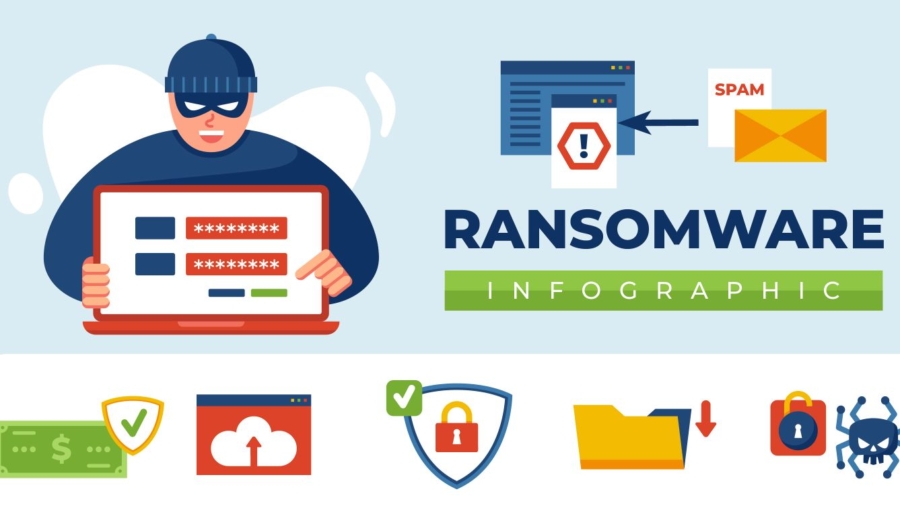Why should Indian IT companies be concerned about ransomware attacks? In recent times, the ominous specter of ransomware has loomed over the Indian IT landscape, leaving companies like HCL Technologies grappling with the aftermath. The incident at HCL Technologies, though contained, sent ripples through the stock market, emphasizing the growing threat of ransomware attacks on Indian organizations.
Understanding the HCL Tech Ransomware Incident:
On 20th December, HCL Technologies, a key player in India’s information technology sector, revealed a ransomware incident within a confined cloud environment during its quarterly earnings report. While the attack didn’t visibly impact the overall HCL Tech network, the stock market responded with skepticism, leading to a decline in share prices. As the company prioritizes cybersecurity and data protection, a thorough investigation is underway to uncover the root cause of the breach.
Unpacking Ransomware:
Ransomware, a malicious software designed to encrypt or lock data, poses a significant threat to organizations. Attackers gain access to devices or cloud-stored data, encrypting them and demanding a ransom for release. The rise in such incidents is alarming for Indian firms, as evidenced by a 2023 study from Sophos, indicating a 73% increase in organizations falling victim to ransomware attacks compared to the previous year.
Concerns for Indian Organizations:
The escalating frequency of ransomware attacks in India is a cause for grave concern. Sophos’ study highlighted that 77% of organizations faced successful data encryption, with 44% opting to pay the ransom. Surprisingly, companies paying the ransom incurred double the recovery costs compared to those relying on backups. Additionally, CERT-In reported a 51% surge in ransomware incidents in H1 2022, with data centers, IT, and TeS sectors being prime targets.
Why IT Organizations Are Prime Targets:
Threat actors strategically target IT organizations due to the invaluable data they possess. As repositories of sensitive information, including intellectual property and personally identifiable data, successful attacks can lead to severe financial and reputational consequences. The rapid adoption of new technologies and open architecture by IT firms makes them susceptible, as cybercriminals exploit potential vulnerabilities.
Learning from Past Incidents:
Infosys, Sun Pharma, and AIIMS are among the notable Indian organizations that have faced ransomware attacks. In November, Infosys McCamish Systems, a U.S.-based subsidiary of Infosys, encountered a ransomware incident, while Sun Pharma and AIIMS fell victim to cyberattacks earlier in the year. These incidents underscore the pervasive threat, urging organizations to fortify their cybersecurity measures.

Securing the Future:
In the face of mounting ransomware challenges, Indian IT firms must adopt proactive strategies. This includes robust cybersecurity protocols, employee training programs, and the regular auditing of digital infrastructure. By understanding the evolving tactics of threat actors, organizations can create a formidable defense against ransomware attacks and secure the digital future of India’s IT landscape.
One-Pointer Summaries: Ransomware threat indian IT firms

Conclusion:
The specter of ransomware looms large over Indian IT firms, necessitating a united front against cyber threats. The recent HCL Technologies incident serves as a stark reminder of the vulnerabilities that persist in our digitally-driven world. By prioritizing cybersecurity and implementing proactive measures, Indian IT organizations can turn the tide against ransomware, ensuring a resilient and secure future for the nation’s technological endeavors.
FAQs:
How did the recent ransomware incident at HCL Technologies impact the company, and why did it lead to a decline in share prices?
The HCL Technologies ransomware incident, while contained within a restricted cloud environment, negatively influenced the company’s stock market perception, resulting in a decline in share prices. The market’s response underscores the financial implications and investor concerns surrounding such cybersecurity events.
What proactive strategies can Indian IT firms adopt to defend against ransomware attacks, as highlighted in the blog post?
Indian IT firms can fortify their defenses by implementing robust cybersecurity protocols, conducting employee training programs, and regularly auditing their digital infrastructure. By understanding the evolving tactics of threat actors, organizations can create a formidable defense against ransomware attacks, securing the digital future of India’s IT landscape.
What are some notable ransomware incidents faced by other Indian organizations, and what lessons can be learned from them?
Infosys McCamish Systems, Sun Pharma, and AIIMS are among the Indian organizations that have faced ransomware attacks. Learning from these incidents emphasizes the pervasive threat, urging organizations to prioritize cybersecurity measures. The blog post delves into the details of these incidents and draws lessons for bolstering the security posture of Indian IT firms.
